Migraines can cause severe pain and discomfort, so finding the right medication to alleviate the symptoms is crucial. There are several options available as the best medication for migraines in Australia. However, it’s important to consult with a healthcare professional first to determine the best medication for your needs and circumstances.
Symptoms of Migraine
Migraine is a type of headache that affects millions of people worldwide, and it is estimated that around 25% of the Australian population suffers from migraine. Unlike other types of headaches which may come and go quickly, migraines can last for several hours or even days. Migraine headaches are often accompanied by a range of other symptoms that can be debilitating, impacting a person’s daily life.
The symptoms associated with migraines can vary depending on the individual, but there are several common symptoms that many people experience during a migraine episode. These symptoms typically include:
- Intense, throbbing pain that is typically felt on one side of the head
- Nausea and vomiting
- Sensitivity to light and sound
- A general feeling of fatigue or weakness
The 4 Phases of Migraine
What sets migraines apart from other types of headaches is the fact that they can be divided into distinct stages, each with its own set of symptoms. Being aware of the different stages of a migraine can help individuals understand their symptoms better and manage their condition more effectively, which is crucial for preventing future attacks.
1. Prodrome Phase
The prodrome phase is the initial stage of a migraine episode and can occur a few hours or even a few days before the onset of the headache. During this phase, a person may experience a range of symptoms including fatigue, mood changes, and digestive issues. They may feel irritable, have difficulty concentrating, or experience food cravings.
2. Aura Phase
The aura phase is characterized by changes in vision that occur shortly before the onset of the severe headache. This may include seeing flashing lights, or experiencing blurred or distorted vision. Some people with migraine may also experience tingling or numbness in their hands or face.
3. Attach Phase
The attack phase is the most intense phase of a migraine episode, during which time the headache pain is at its most severe. Along with headache pain, a person may experience nausea, vomiting, and sensitivity to light and sound.
4. Postdrome Phase
Finally, the postdrome phase is the recovery phase following a migraine attack. During this phase, a person may feel weak or tired, and experience difficulty concentrating. The symptoms typically dissipate gradually over the next few hours or days.
The Best Medication for Migraines Australia
Triptans
One of the most effective prescription drugs for treating chronic migraines is the triptan class of medication. Triptans work by narrowing the blood vessels in the brain, thereby reducing headache symptoms. Examples of triptans include sumatriptan, rizatriptan, and zolmitriptan.
Calcium Channel Blockers
Another class of preventive treatment for migraine is calcium channel blockers. These drugs work by relaxing the blood vessels and reducing pressure inside the head. A commonly used calcium channel blocker for migraines is verapamil.
CGRP Monoclonal Antibodies
More recently, CGRP monoclonal antibodies have emerged as a promising acute treatment option for migraines. These drugs block the activity of a chemical called calcitonin gene-related peptide (CGRP), which is involved in pain transmission.
Over-the-Counter Drugs
In addition to prescription and preventive medication, over-the-counter drugs such as ibuprofen, aspirin, or acetaminophen can also help relieve migraine pain. It’s important to note that overuse of these drugs can lead to medication overuse headaches, where the headache returns as soon as the drug wears off.
Supplements
Alternative methods, such as vitamins, minerals, herbs, and lifestyle changes, can also be used to manage migraines. For example, magnesium supplements may help reduce the frequency of migraines, while riboflavin (vitamin B2) and Coenzyme Q10 (CoQ10) may also provide some relief. Herbal options such as butterbur and feverfew have also been suggested to help prevent migraines.
Lifestyle Change
Lifestyle changes such as getting regular exercise, maintaining a healthy diet, and practicing stress management techniques like meditation can also help prevent migraines. Identifying and avoiding triggers such as certain foods, drinks, or bright lights can also help reduce frequent migraines.
Migraine Triggers
Migraines are a neurological disorder that can be triggered by a variety of factors, including food and environmental factors. Certain triggers can bring on an acute attack of migraine, making it important to understand what they are and how to manage them.
Migraine triggers can vary from person to person, but common culprits include hormone changes in those assigned females at birth, stress, certain foods and drinks, changes in weather, alterations in sleep patterns, and physical activity. For some individuals, triggers may be multiple.
Foods such as cheese, chocolate, and red wine, among others, are commonly associated with migraine attacks. These foods contain chemicals that can trigger headaches in susceptible individuals. Other foods to watch out for include processed and cured meats, aged cheeses, and foods containing monosodium glutamate (MSG).
Environmental factors can also trigger migraines. Changes in barometric pressure, bright or flickering lights, and strong smells can all be culprits. Even changes in sleep patterns or sleep disturbances can trigger migraines.
Self-Care for Migraines
Keeping a migraine journal can help identify personal triggers. In a journal, individuals can document what they eat and drink, how they sleep, and any environmental factors that might trigger migraines. By doing so, they can better understand what triggers their migraines and develop strategies to manage or avoid them.
Managing migraine triggers can include avoiding foods and drinks that have been identified as problematic, as well as managing stress levels and maintaining a regular sleep pattern. Employing relaxation techniques like meditation or yoga can also be helpful. When a trigger is unavoidable, like changes in weather or menstrual cycles, treatment of migraine prescribed by a doctor, can help prevent a menstrual migraine attack.
Ultimately, understanding and managing migraine is an important step. By identifying personal triggers and avoiding or managing them, individuals can reduce the frequency and severity of their migraine attacks and can make use of migraine medications available in the market.


